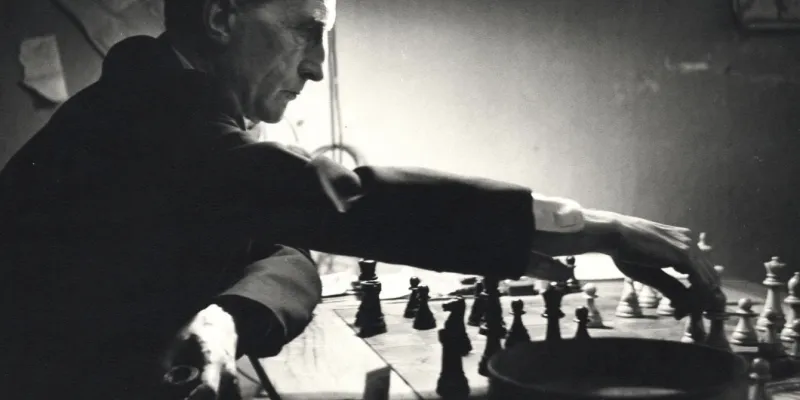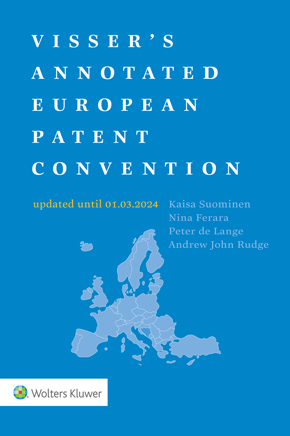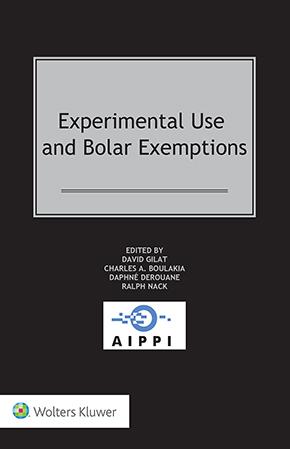UPC: Early Strategic Insights for Life Sciences
November 6, 2025
Two years after its launch, the Unified Patent Court has moved from promise to practice. What once looked like a procedural experiment has become a credible, fast, and intellectually rigorous forum—especially for preliminary measures. Beyond speed, the Court is shaping a coherent body of case law that already influences litigation strategies across Europe.
I. Acquiring Strong Rights
Protectable Subject Matter: Biological Inventions
The Hague Local Division, in Amycel v. Polish Farmer (UPC_CFI_195/2024), granted provisional measures on a cultivated mushroom strain defined by Budapest-style deposit, with a substantive but non-final assessment of validity and identification. This was an order on provisional measures, not a final decision on the merits.
The message for ag-biotech and beyond is simple: characterization and deposit remain the twin pillars of patentability and enforceability. In practice, that means Budapest-style deposits, clear molecular data, and internal consistency between the claims and the experimental record. This logic naturally extends to cell lines, engineered microorganisms, and other biological materials: no shortcuts survive judicial scrutiny.
Claim Drafting: Precision Over Flexibility
In the Alexion antibody appeals (UPC_CoA_402/2024 and UPC_CoA_405/2024), the Court of Appeal applied a text-first construction from the skilled person’s perspective at the filing date and declined to cure drafting issues except where a truly obvious error exists. The Alexion appeals concerned claim interpretation and alleged drafting errors in the context of preliminary relief, confirming that prosecution history may be considered but will not rescue over-broad or inconsistent wording.
Translation: the UPC will not save a poorly drafted claim. Strategic imperatives follow:
- Functional generalities and genus-style language create vulnerabilities.
- Align examples, specification, and prosecution statements with the intended scope.
- Precision at filing and consistency during prosecution are now decisive.
- Literal construction governs—no judicial rescue for ambiguity.
Opposition Defence: Litigation Dress Rehearsal
The Court consistently reviews EPO opposition records but conducts its own validity analysis. Preliminary injunctions are refused when “serious doubts” arise—plausibility, sufficiency, or inventive step.
This approach was reaffirmed in 10x Genomics v. NanoString (UPC_CoA_335/2023), where the Court of Appeal lifted the PI due to serious unresolved validity doubts, illustrating that the UPC conducts its own validity analysis even alongside EPO proceedings. Similarly, Carrier v. Bitzer (UPC_CoA_22/2024) clarified that a stay under Rule 295(a) RoP requires a concrete and imminent EPO decision; accelerated or merely pending opposition is insufficient. Meril v. Edwards (UPC_CoA_511/2024) refined the test: an upcoming first-instance EPO decision can justify a stay in principle, but the stay remains discretionary and requires a genuinely near-term timeline.
Recent practice in Astellas v. Healios (UPC_CFI_80/2023) and Toyota v. Neo Wireless (UPC_CFI_239/2023) shows that the UPC will not stay proceedings unless a concrete, imminent EPO decision is expected. The Hamburg Local Division in Amgen v. Alexion confirmed that validity is assessed independently from any EPO outlook.
II. Enforcing Rights
Second Medical Use Claims: The Two-Limb Test
The Düsseldorf Central Division, in Sanofi/Regeneron v. Amgen (UPC_CFI_505/2024), established the framework for second medical use infringement. Two elements must be proven:
- Causation: whether the offering or marketing is liable to lead to the claimed therapeutic use.
- Knowledge: whether the defendant knew, or ought to have known, that this would occur.
The Court found novelty and inventiveness but no infringement, as the product was not approved or marketed for the claimed use and contextual evidence was insufficient. Validity can stand while infringement fails if the evidential link is missing.
Evidence that matters includes product labelling (SmPC/PIL), sales patterns, market targeting, medical education materials, and prescriber data. Counter-measures—or the lack thereof—also play a role.
The Sanofi decision underscores that inducement is built from contextual proof: the UPC demands a holistic evidential nexus, not mere inference.
Pre-Launch Activities: Where Exemptions End
The UPC is drawing clear lines around experimental-use exemptions in pharmaceutical contexts. The focus is imminence, not broad research freedom.
Manufacturing to support regulatory approval remains protected; manufacturing in anticipation of a commercial launch after marketing authorization may constitute infringement. Ongoing post-marketing studies do not extend exemption protection indefinitely.
For generics and biosimilars, the tactical guidance is straightforward: map pre-launch steps country by country, avoid packaging or wholesaler agreements too early, and document the regulatory purpose of each manufacturing campaign with precision.
Cross-border PIs may issue before first sales where launch preparations are advanced, but the assessment is fact-specific and includes national pricing/reimbursement and procurement contexts. The Court of Appeal found imminence where Portuguese pricing/reimbursement (PEP) had been completed unusually early without credible justification; public procurement activity can amount to an “offer” under Article 25 UPCA.
The Boehringer Ingelheim v. Zentiva decision (UPC_CoA_446/2025, see here) confirmed that patent holders may obtain preventive relief across 17 member states once launch infrastructure is substantially complete, even without a fixed launch date. The practical message is clear: if you gear up to launch, the court can gear up to stop you.
Tailored Relief: Patient Interests as a Moderating Factor
Injunctions remain the default remedy, but the UPC is prepared to craft surgical accommodations when patient welfare demands it.
In Edwards v. Meril (UPC_CFI_15/2023), the Court allowed implantation of infringing cardiac valves already scheduled for surgery. In Insulet v. EOFlow (UPC_CoA_768/2024), the Court granted a preliminary injunction despite patient-switching arguments, recognizing that transition was practicable. Edwards v. Meril confirms injunctions as the default, with narrow clinical carve-outs; Insulet limits the weight of patient-transition arguments.
These rulings are not departures from principle but affirmations of proportional justice: innovators are rewarded for anticipating patient impact; defendants benefit from genuine good faith in licensing discussions.
Proportionality in Practice: The Merz Precedent
In Merz v. Viatris (UPC_CFI_697/2025, Paris LD, see here), the Court capped submissions to roughly seventy pages by procedural order after a 470-page defence, exemplifying the UPC’s economy-of-procedure ethos.
Key takeaways:
- Proportionality and procedural economy now frame advocacy.
- Dense, decision-ready briefs travel farther than document dumps.
- Page limits discipline the argument and sharpen persuasion.
The implicit lesson is jurisprudential as much as practical: clarity and discipline are not constraints—they are the price of credibility before a transnational court.
III. The SPC Dimension and Jurisdictional Uncertainty
Current Framework: CJEU Narrowing
CJEU case law continues to confine SPC scope and duration while discouraging evergreening. The trilogy Teva v. Gilead(C-121/17), Santen (C-673/18), and Royalty Pharma (C-650/17) confine SPC scope and duration: the product must be specifically identifiable within the patent, only the first marketing authorization counts, and duration follows strict textual calculation.
For innovators, this means the claim’s nexus to the authorized product is critical; for challengers, it provides fertile ground for targeted validity attacks.
The Unitary SPC: Promise and Peril
The proposed EU Regulation on unitary SPCs would centralize applications before the EUIPO, assisted by national experts and maintained in a single public register. Political signals suggest adoption around 2026, with first filings expected in 2027.
Yet jurisdiction remains unsettled. Three plausible models emerge:
- UPC exclusive jurisdiction — a clean, one-stop system integrating patents and SPCs, ensuring coherent enforcement and legal certainty. However, Article 32 UPCA refers only to “Supplementary Protection Certificates issued for a product protected by a patent,” without expressly mentioning unitary SPCs created under future EU legislation. Unless the Agreement is interpreted expansively—or formally amended—this wording may not automatically extend the Court’s jurisdiction to EUIPO-granted SPCs.
- Shared or uncertain jurisdiction — an ambiguous framework risking fragmentation between the UPC, the EUIPO, and national authorities.
- National court jurisdiction — a dual system where the UPC would handle patents while national courts would retain SPC disputes, prolonging procedural asymmetry.
Stakeholders question the EUIPO’s technical and regulatory experience in pharmaceutical SPCs, warning of potential fragmentation or inconsistency absent strong review alignment with the UPC and CJEU. Unlike the EPO or the UPC, the EUIPO lacks a tradition of assessing complex technical or regulatory data, and its procedures were built for trademarks and designs, not patent-derived rights. Entrusting it with SPC examination thus raises concerns about competence, consistency, and judicial review.
The choice among these models will define the next decade of pharmaceutical enforcement. An exclusive UPC framework would consolidate expertise and procedural efficiency across Europe. A fragmented regime, by contrast, would perpetuate parallel tracks, coordination fatigue, and inconsistent outcomes—a regression the industry can ill afford.
Strategic Implications
For originators: draft for literal construction; align prosecution and enforcement; build robust opposition defences; and treat proportionality as a structural rule, not a procedural afterthought.
For generics and biosimilars: prepare EPO oppositions early; map pre-launch steps carefully; avoid creating the appearance of imminence; and anticipate proportionality-based denials.
For all parties: recognize that UPC judges reward preparation, discipline, and evidential clarity. The system is not pro-originator or pro-generic—it is pro-credibility.
Conclusion
After twenty-four months, the UPC has earned its place as Europe’s central stage for high-stakes life sciences disputes. It rewards precision, not volume; foresight, not reflex.
The unresolved question of jurisdiction over the future unitary SPC will determine whether the system achieves true consolidation or slides back into the patchwork it was meant to replace.
Either way, the direction is clear: the UPC is not merely applying patent law—it is rewriting its grammar for a new continental audience. Those who learn the language early will set the tone for the decade ahead.
You may also like













